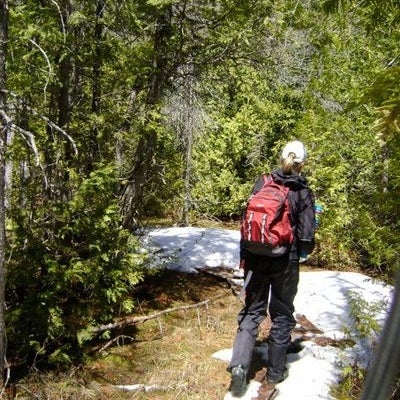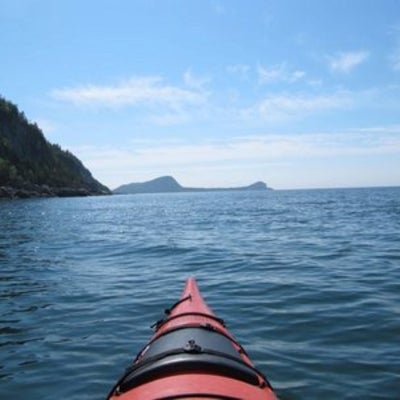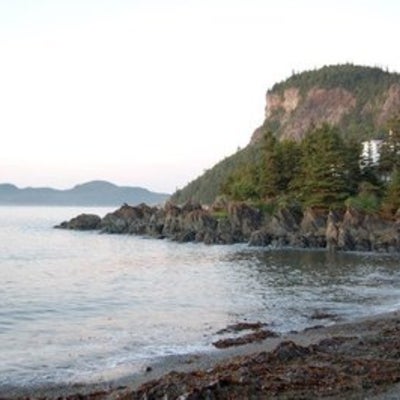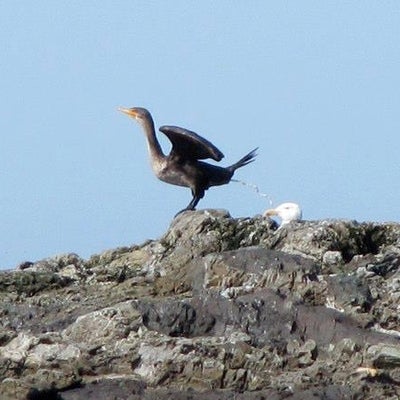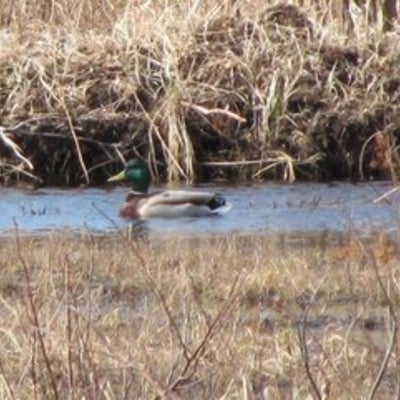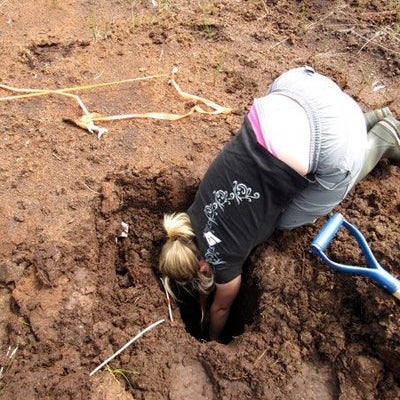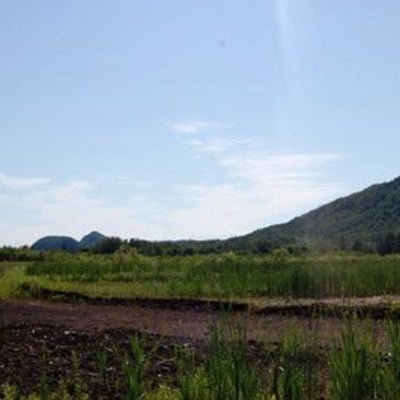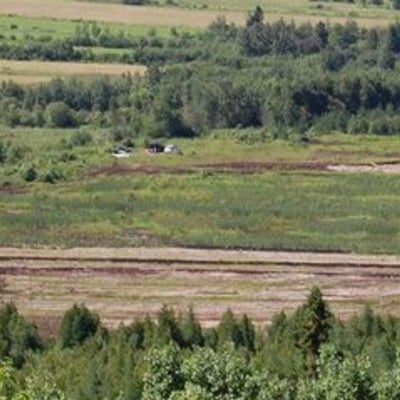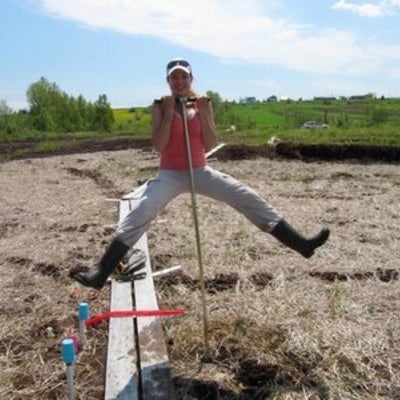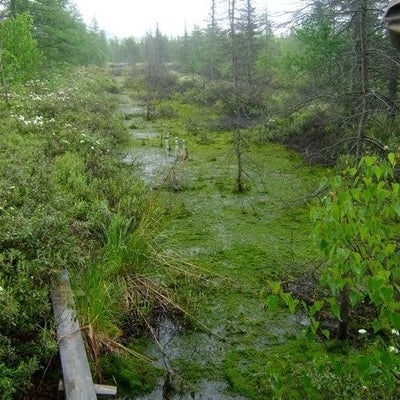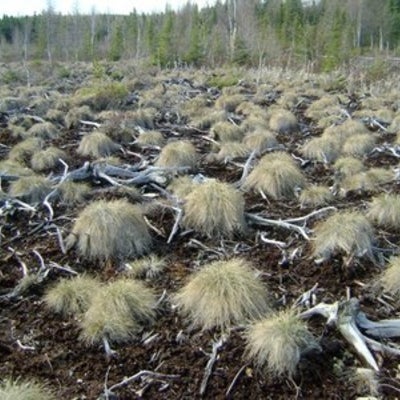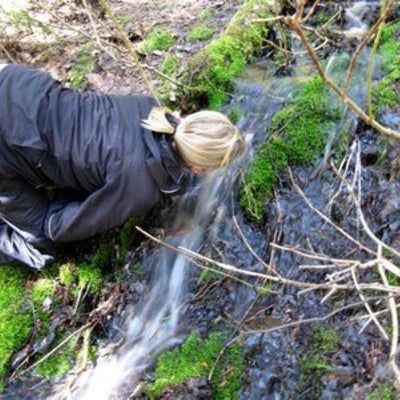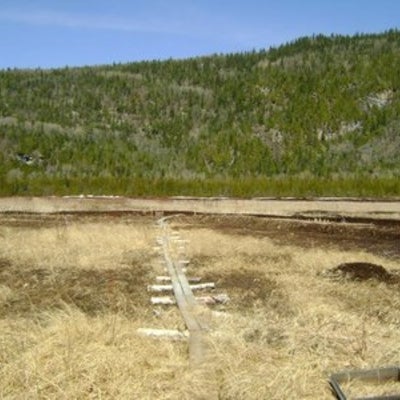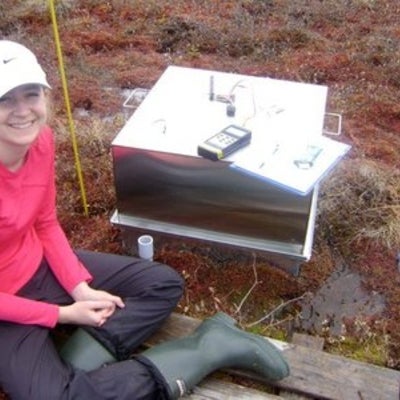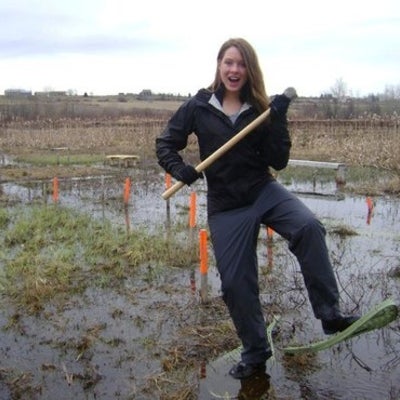Research led by Jonathan Price and Dr. Rochefort (University of Laval, Quebec) over the past 20 years have led a multidisciplinary team of ecologists, hydrologists and biogeochemists to pooled their expertise to conduct a long-term (greater than ten years) whole-ecosystem bog restoration experiment in the Bois-des-Bel peatland.
Bic-Saint Fabien - Vacuum harvested peatlands do not easily regain their hydrological function after peat production so restoration is needed to create hydrology appropriate for fen plant species that will accumulate peat. Peat extraction at 'Bic' by block-cut method began in 1946, moving vacuum harvesting in the early 1970's. Production ended in 2000. After exploitation, about 0.04-1 m peat remained; and Bic-Saint-Fabien was restored as a fen (having been a bog naturally) beginning in fall 2009. Re-wetting consisted of blocking active drainage ditches, contouring the peat surface into level terraces to even out elevation differences, and building peat ridges (bunds) to retain runoff. Vegetation was introduced to some re-contoured parts of the site by the surface layer transfer method. A straw mulch treatment was applied to minimize evapotranspiration.
Water table, volumetric soil moisture content and soil-water pressure were examined to better understand the impact of reconfiguration on the hydrology of the system. A 1-1.5 m thick layer of gyttja (a low permeability, high porosity lake-bed sediment) underlies the residual peat; it was parameterized and assessed to see if it could potentially compress and supply water to the overlying peat when the system is stressed.
Rewetting did not result in a uniform wetness across the cutover site chiefly due to local differences in peat surface elevation. While the interior was generally wetter than the peripheral regions, there were some exceptions, notably near where dams were installed on peripheral drainage ditches. Markedly different spatial patterns of wetness suggests that a uniform prescription regarding vegetation re-establishment in the rewetted section may not be warranted. The compression of gyttja after Bic-Saint-Fabien was rewetted was small but might be significant under drier conditions with greater water table variability, such as during the early stages of site drainage when prepared for peat extraction or after peat production ceased. The release of water to the peat layer from the compression of gyttja after peat production finished and before rewetting occurred, may be an important self-preservation mechanism, eventually making it easier to rewet.
Selected publications
- Malloy, S. and Price, J.S. 2014. Fen restoration on a bog harvested down to sedge peat: A hydrological assessment. Ecological Engineering. 64: 151-160. https://doi.org/10.1016/j.ecoleng.2013.12.015.
